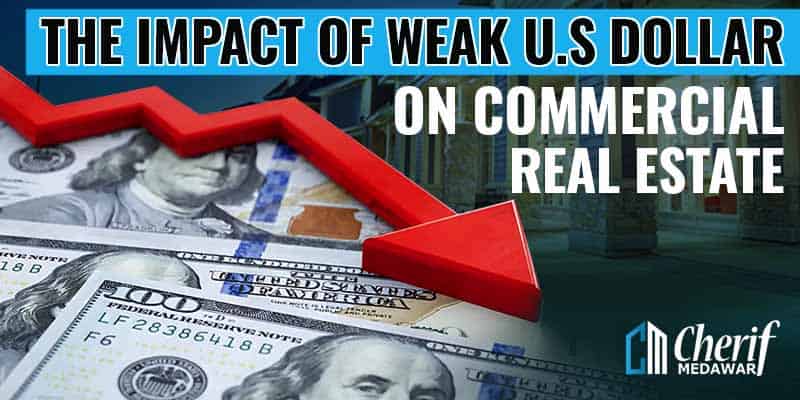Commercial Real Estate Outlook 2023: Navigating Market Uncertainty
The commercial real estate market in 2023 continues to face challenges and uncertainties. Economic factors, geopolitical tensions, and market disruptions have created a landscape where careful navigation and strategic decision-making are essential for success. This midyear outlook explores key trends, opportunities, and recommendations for commercial real estate owners and operators. Macroeconomic Landscape and Market Disruptions Geopolitical tensions, market volatility, and concerns about high inflation mark the macroeconomic environment. These factors are expected to persist throughout the year’s second half and can impact the commercial real estate market. However, despite recent disruptions within the financial industry, the banking system remains strong. Our solid financial position and diversified deposit franchise enable us to support clients during market volatility. Interest Rates and Uncertainty One of the good-sized factors affecting the economic actual estate market is the recent collection of hobby price hikes by the Federal Reserve. During the last year, hobby costs have risen unprecedentedly, making it challenging for investors to regulate. Many commercial actual property proprietors nonetheless take advantage of traditionally low rates, ensuing in a slowdown in refinancing interest. It remains to be seen whether interest fees will continue rising or the Fed will alter its direction. This uncertainty provides any other layer of complexity for buyers. Commercial Real Estate Trends Across Asset Classes Despite the uncertainties, certain asset classes have shown resilience and opportunities for growth in the first half of 2023. Multifamily: Slower Rental Cost Increases Multifamily properties have remained strong, although the rate of rent increases has slowed down. in step with Moody’s Analytics, the national emptiness charge for multifamily residences became four.5% at the give up of 2022. At the same time as the emptiness fees range throughout metro regions, the median nationwide vacancy fee stood at three.nine% in April. These figures indicate the continued demand for multifamily housing, albeit with more moderate rental cost growth. Affordable Housing: Addressing the Supply-Demand Gap The shortage of affordable housing remains a pressing issue. Meeting the demand requires a multifaceted approach, including preserving affordable housing, constructing new units, and securing financing for these projects. Our Capital Solutions group focuses on financing affordable housing initiatives, while collaborations with public entities help facilitate zoning variances to enable greater residential density. Retail Sector Strength: In-Person Services While e-commerce has made significant strides, certain services still rely on in-person visits. Trips to nail salons, barbershops, and sports bars are part of consumers’ routines. Retailers providing these services can benefit from the continued demand for personalized experiences, reinforcing the importance of neighborhood retail. Industrial Sector: Stabilizing Growth Driven by e-trade and the on-call for the economy, the industrial zone has had a skilled good-sized boom in recent years. But there are symptoms of potential stabilization. The vacancy rate for distribution and warehouse areas reached a reported low of 4.1% in the 2nd half of the last year, 2022, but it extended slightly to 4.2% inside the first region of 2023. Monitoring this trend is crucial for understanding the evolving dynamics of the industrial market. Office Space: Adapting to Remote Work Remote and hybrid work models have reshaped the demand for office space. While A-class properties continue to perform well, B- and C-class office buildings need help, especially those outside prime areas with shorter leases. Office properties with long-term leases of 10 years or more may have better resilience during market corrections. Adapting to the evolving workplace landscape is essential for office space stakeholders. Related- Learn the Steps to Invest in Commercial Real Estate Opportunities in Commercial Real Estate Despite the economic uncertainty, several opportunities exist for commercial real estate investors in the coming months. Innovative Proptech: Streamlining Operations and Cutting Costs Commercial Real Estate highlights the rising costs in the industry, such as energy, labor, and raw materials, along with supply chain disruptions. Embracing protection and innovative building tools can help commercial real estate owners, and investors reduce inefficiencies and lower costs. By leveraging innovative technologies, property owners can optimize operations, enhance tenant experiences, and improve overall profitability. Rent Payment Technology: Streamlined and Secure Processes In the past, manual and paper-based rent payment processes were time-consuming and prone to fraud. However, with digital rent payment solutions, property owners and managers can streamline operations and meet the evolving needs of residents. Digital platforms offer secure and convenient payment options, improving cash flow management and enhancing tenant satisfaction. Property owners can modernize their operations by adopting digital rent payment technology and staying ahead in an increasingly digital world. Conclusion The 2023 midyear outlook for commercial real estate highlights both challenges and opportunities. Economic uncertainties, interest rate fluctuations, and shifting market dynamics require commercial real estate professionals to stay agile and informed. By leveraging opportunities in agency lending, embracing innovative solutions, and adopting digital rent payment technology, investors can position themselves for success. Are you ready to invest in commercial real estate? CRE Deal PRO MASTERMIND is the most important training course & CONNECTION to one of the Nation’s most creative commercial real estate investors! It is a Network for the answers you need to get started or scale your business in this year. A MASTERMIND to analyze your deals, learn today’s trends and brainstorm to take your deals to the highest & best level. About Cherif Medawar Cherif Medawar is a Best Selling Author, Speaker, Fund Manager, and leading commercial real estate investing Consultant in the United States and Puerto Rico. There will be many opportunities in 2023, for investors to break into commercial real estate and scale their current business– you just need to understand that the money is in the structure. Read Cherif’s book and get the story on how he started and how he launched his first Real Estate Fund (Regd 506b) in the midst of the last recession. BLUE OCEAN OPPORTUNITIES IN COMMERCIAL REAL ESTATE. Get Your Free Copy!







